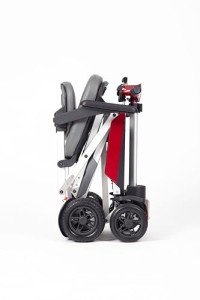10 Mobility Devices-Friendly Habits To Be Healthy
Understanding Mobility Devices: Enhancing Independence and Quality of Life
In today's fast-paced world, the desire for mobility is universal. Nevertheless, particular medical conditions or age-related difficulties can prevent movement, leading to an ongoing look for assistance. Mobility devices work as vital tools to enhance independence, enhance quality of life, and make it possible for people to engage totally in their neighborhoods. This post offers a thorough introduction of mobility devices, including their types, features, choice criteria, and more.
Types of Mobility Devices
Mobility devices range from simple aids to intricate equipment, tailored to meet numerous needs. Below is a table summing up typical types of mobility devices:
Type of Device
Description
Ideal For
Walkers
Four-legged assistance devices that supply superior stability while walking.
Individuals needing extra support.
Walking canes
Single or three-legged sticks that improve balance and support walking.
Those with small mobility troubles.
Wheelchairs
Seats installed on wheels, available in manual and electric versions.
Individuals with limited or no mobility.
Scooters
Electric cars developed for outside use and ease of navigation.
Those who can't walk fars away.
Crutches
Devices that help individuals move weight away from a hurt leg.
People recovering from leg injuries.
Rollators
Walkers with wheels, seats, and brakes for improved mobility.
Users requiring rest choices while strolling.
Raise Chairs
Reclining chairs that help users in standing and sitting down.
Seniors or those with mobility restraints.
Mobility Scooters
Small electric automobiles for minimal mobility, typically utilized outdoors.
People requiring support over cross countries.
Key Features of Mobility Devices
When picking a mobility device, several key features must be considered to ensure optimum performance and ease of use:
- Weight Capacity: Understanding the device's weight constraint is vital for safety and efficiency.
- Adjustability: Devices should be adjustable in height and width to fit the user conveniently.
- Mobility: Lightweight and foldable choices are essential for users who travel or require transportation.
- Stability and Safety: Look for features like anti-tip wheels and strong structures to enhance safety.
- Relieve of Use: Simple mechanisms and easy to use styles can make a significant difference in everyday usage.
- Convenience: Ergonomic styles and padded seats can boost the user experience.
Choosing the Right Mobility Device
Choosing the ideal mobility gadget can be a challenging job. Here are some actions to assist the decision-making process:
- Assess Needs: Evaluate the individual's mobility obstacles and day-to-day activities.
- Speak with a Professional: Engage health care specialists who can supply recommendations based on the individual's physical condition.
- Trial Options: If possible, trial various devices to determine convenience and functionality.
- Review Budget: Consider the expense of the gadget, including any extra functions or adjustments required.
- Research Options: Determine the best brand names and designs by reading reviews and comparisons.
Table: Comparative Analysis of Popular Mobility Devices
Device
Benefits
Downsides
Walkers
Excellent stability, promotes walking.
Bulky, may limit movement in small spaces.
Canes
Lightweight, improves balance.
Might not supply enough support for serious mobility problems.
Wheelchairs
Ideal for those with substantial mobility limitations.
Can be cumbersome, particularly in indoor environments.
Scooters
Great for outside usage, easy to maneuver.
Minimal indoor usability, heavier.
Rollators
Provides rest alternative, easy to move.
May require more space than standard walkers.
Raise Chairs
Comfortable, assists transition from sitting to standing.
More pricey, bigger footprint.
Often Asked Questions (FAQs)
1. What is a mobility gadget?
A mobility gadget is any tool developed to help individuals in moving and navigating their environment. This consists of walkers, wheelchairs, scooters, and crutches.
2. How do I know which mobility device is best for me?
Consider your specific mobility obstacles, physical capabilities, and way of life requirements. Consulting with healthcare professionals can also offer tailored suggestions.
3. Are mobility devices covered by insurance coverage?
Many insurance strategies, consisting of Medicare, may cover certain mobility devices. It's essential to consult your insurance coverage supplier for particular coverage information.
4. Can I lease a mobility gadget rather of buying one?
Yes, lots of medical supply shops and pharmacies offer rentals for mobility devices. This choice is advantageous for people with short-lived mobility concerns.
5. How can I preserve my mobility device?
Regular maintenance is essential. It includes cleaning up the gadget, looking for wear and tear, and making sure all parts are operating properly.
The Impact of Mobility Devices on Quality of Life
Mobility devices significantly improve the lifestyle for individuals with minimal mobility. They cultivate independence, encourage social interaction, and boost access to necessary services and leisure activities.
- Increased Independence: Users can browse their areas, go to occasions, and take part in pastimes without relying on others.
- Social Engagement: Mobility devices facilitate involvement in social events, consequently combating feelings of seclusion.
- Boosted Safety: Devices offer stability and minimize the danger of falls, promoting user self-confidence.
Mobility devices are more than simply tools for movement; they are entrances to self-reliance and quality living. By understanding relevant site of mobility aids readily available, their key features, and considerations for choosing the best gadget, individuals can make informed choices about their mobility needs. Ultimately, the right mobility gadget can cause a more active, satisfying life. Whether it's a walker, wheelchair, or scooter, the right option contributes substantially to improving the mobility and independence of users.
